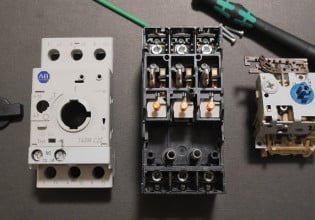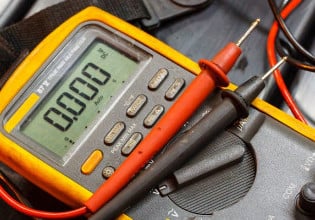The Role of Carbon Fiber in 3D Printing
The following will look at key factors in manufacturing carbon fiber parts and how 3D printing could address some of the materials processing challenges.
Industries are becoming more mobile at a time when safety and environmental regulations are increasing. To answer the demand, manufacturers push to make products lighter and stronger, leading many companies to invest more in material science.
Carbon fiber has become a solution in some industries, but the cost of materials and labor can make it challenging to produce at a competitive price for some applications.
The amount of labor and time associated with processing carbon fiber can make mass production difficult. The following will look at key factors in manufacturing carbon fiber parts and how 3D printing could address some of the materials processing challenges.
Polymers are used in many applications. Adding fibrous material such as carbon fibers can increase its properties such as strength, fatigue, creep, and others. Several factors will affect the final part, including:
- Material Properties
- Wetting
- Fiber Geometry
- Orientation
Material Properties
Material properties of the medium and fiber material can be provided or roughly calculated based on the amount of materials and layers or other factors such as the Rule of Mixtures and the volume percentage of the materials.
In one example, published in Multidisciplinary Digital Publishing Institute (MDPI), the materials strength between a glass fiber, carbon fiber, and resin was presented.
|
Material |
Tensile Strength (MPa) |
Tensile Modulus (GPa) |
|
CPIC ECT469L-2400 glass fiber |
2366 |
78.7 |
|
TORAY T620SC-24K-50C carbon fiber |
4175 | 234 |
|
SWANCOR 2511-1A/BS epoxy resin |
73.5 |
3.1 |
Data provided by MDPI Material Journal
3D printing is limited to thermoplastics, meaning polymers that can be remelted. Nylon and Nylon 12 are common when looking at stronger polymers that work well for the 3D printing process.
Various nylons could be used, but in general, the ultimate tensile strength of nylon will be around 50 to 90 MPa. MakerBot produces both a nylon and carbon fiber nylon filament with a tensile strength of 66 MPa and 110 MPA, respectively.

Method carbon fiber edition. Image courtesy of MakerBot.
The difference in tensile strength is an example of how adding fibers can add value to materials by carrying forces over a greater area. However, this ability depends on how well the fibers are bonded into the medium material.
Wetting
Wetting can greatly affect material strength. Throwing fibers into a mold before injecting a polymer does not ensure materials are fully bonded or wetted. This is why polymers and fibers are sometimes processed into preformed sticks that can be added during an injection molding process.
In one example, Integrated Composite Products Inc. (ICP) looked at beam applications, such as running boards on a vehicle. Beam applications offer the opportunity after a form part is ejected and before the mold closes to add pre-formed and wetted sticks of material into the mold.
ICP has proven that this technique works, and the medium material of the composite stick will bond with the injected material better than injecting a polymer into a mold with added fibers.
The need to be wetted works well for 3D printing. When extruding polymer filament, one of the most cost-effective processes for 3D printing, the fibers can be preprocessed into the filament to ensure it is fully-wetted.
Additionally, 3D printing filament is on a continuous spool, which can provide an advantageous fiber geometry.
Fiber Geometry
Fiber geometry is generally about the diameter and length of the fibers. While larger diameters can withstand greater forces, much of the focus is on the fiber length.
There are normally three types of fibers: short, long, and continuous. Short fibers are generally under 1mm, and according to polystruct.com when it comes to glass fibers they, “... are in effect milled during the compounding process resulting in a retained fibre length (RFL) of between 0.2-0.9mm. Long Fibre Thermoplastics (LFT) on the other hand are manufactured in a way that the fibres are the full length of the pellet and only limited by the injection moulding machines’ ability to accept the pellets. Generally pellets and hence RFL are 10-15mm long.”
While long fibers increase strength, GD&T stability, and other properties, it isn’t used in many processes.

A 3D printed part made from a carbon fiber – nylon material on Stratasys’ new 380mc Carbon Fiber. Image courtesy of Stratasys.
Long fibers can break down in press or injection processes and may even cause wear on tooling. When it comes to continuous fibers, it seems limited to hand-laying or high-end automation equipment.
3D printing filament could have wetted long, short, or continuous fibers in the material. The main difference would be if there is a continuous fiber filament, the 3D printer would need a way to cut the fiber to move freely from point to point and layer to layer.
The ability to offer a continuous fiber, or even a long fiber, adds much value to use carbon fiber in 3D printing. Another important factor will be printing parts to find the best orientation for 3D printing and the fibers in the material.
Orientation
Orientation is important for both 3D printed and carbon fiber parts. When considering design for manufacturing, designers will generally orient parts to reduce structural supports during the 3D printing process. Less supports reduces print times, material use, and post-processing. For strength during operation however; a designer may want to orient layers in the Z-axis to be perpendicular to applied forces.
According to hubs.com, “... FDM [an extruded polymer process] parts are much more likely to delaminate and fracture when placed in tension in the Z direction compared to the XY directions (up to 4-5 times difference tensile strength).”
According to UNSW.edu when it comes to fiber orientation, “Optimum strength and stiffness can be achieved in a composite by aligning the fibres parallel to the direction of loading. A method of producing a more isotropic composite is to randomly orient the fibres within the matrix. ... However, this decreases the overall strengthening effect.”
According to another study, maximum stress for an epoxy reinforced carbon fiber material changed from 1380 MPa to 10.6 MPa by orienting the fiber parallel and perpendicular respectively to an applied force.
The same report showed that glass fiber didn’t undergo as much of a change. This is why understanding application and forces are imperative when considering 3D printing with carbon fiber.
Material properties and fiber geometry may be necessary to understand but should be provided by the supplier. Fibers will already be in the filament, so wetting may not be as much of an issue for an end-user.
If you notice one supplier’s material works better than another, it could be due to how well the fibers bond to the polymer. For designers, orientation will become one step more difficult and important as 3D printing adopts carbon fiber. Talk to your filament provider or 3D OEM about what is possible.






